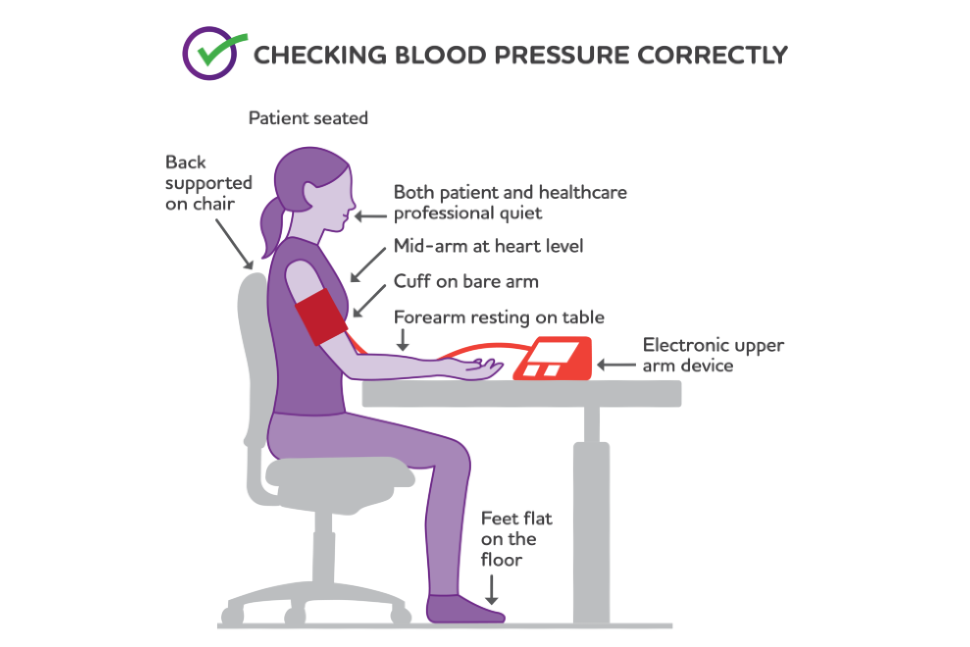A new study has found only one in seven images available in popular online photography libraries accurately depicts the correct technique for checking blood pressure according to international guidelines, which experts say may beundermining global efforts to control the 'silent killer' of hypertension.1
The review was conducted by The George Institute for Global Health and UNSW Sydney in collaboration with Griffith University, and published today in the academic journal Hypertension.
Libraries of stock photos available online are a primary source of images used to illustrate stories and educational material about blood pressure checking by media outlets and websites intended to guide the public, healthcare professionals, researchers, and medical students in the correct technique.
"Images are very powerful communication tools, because people tend to recall images more clearly than words, known as the 'picture-superiority' effect.
"With more people checking their own blood pressure at home without being taught the right technique, the widespread use of inaccurate visuals could be having serious health consequences because people are relying on them instead.
By:Professor Alta Schutte
Co-lead of the Cardiovascular Program, The George Institute for Global Health, and Conjoint Professor of Cardiovascular Medicine, UNSW Sydney
More than 85 per cent of 1,100 photos (the first 100 images from each) in the largest image libraries including Shutterstock, Getty Images, iStock and Alami failed to meet one or more criteria outlined in the international guidelines for correct technique when checking blood pressure. The guidelines were recently standardised to improve the accuracy of blood pressure measurement.2

High blood pressure is a leading contributor to heart disease, stroke, and premature death worldwide (over 11 million deaths annually).3 In Australia, one in three adults has high blood pressure and only 32 per cent of those diagnosed have it controlled with medicine to recommended levels.3,4
"Accurate measurementis the cornerstone of effective diagnosis and management of high blood pressure; without it, we can't be sure people are getting the best treatment, which is so important because every reduction in systolic blood pressure lowers the risk of having a heart attack, stroke or dementia.
By:Prof. Schutte
Seemingly small things like having the arm too low or too high, sitting without back support or with crossed legs, or placing the cuff over clothing instead of bare skin, can alter measurements.
In the study, iStock had the highest proportion of accurate images of blood pressure checks at 28 per cent, while Flickr and Freepik had the lowest (7 per cent). More of the photos of people doing their own checks (35 per cent) were accurate than those where people were in a hospital or doctor's office (8 per cent) or being checked by a healthcare professional (7 per cent).
The most common error in photos was the patient not having their back supported (73 per cent of images), patient's whole forearm not resting on a table (55 per cent), older-style, manual devices being used (52 per cent), and the patient not having their feet flat on the floor (36 per cent).
"Our study reveals a major challenge in the public representation of blood pressure measurement, highlighting the need for better education not only as monitoring at home becomes more common, but even among healthcare professionals.
It was alarming to see quite how big a problem it was, particularly when you think that AI-generated images of blood pressure checks will also be built on image libraries online.
By:Dr Leopold Aminde
Senior Research Fellow in Griffith University's School of Medicine and Dentistry
The study analysed results from a Google search in July 2024 that identified 11 stock photo websites with at least 1,000 images of blood pressure (BP) measurement each. Researchers screened a minimum of 100 images per site from platforms including iStock, Getty Images, Shutterstock and others, for a total sample of 1,106 images. Two independent reviewers evaluated each photo for accuracy against the 10 visual criteria in the 2023 International Consensus on Standardized Clinical BP Measurement.2
References
1. Aminde LN, Islam FMA, Cheng VE, Saad C, Li Y, Schutte AE. Poor accuracy of blood pressure measurement images online: Implications for public health education. Hypertension 2025 DOI: 10.1161/HYPERTENSIONAHA.125.25064
2. Cheung AK, Whelton PK, Muntner P, et al. International Consensus on Standardized Clinic Blood Pressure Measurement - A Call to Action. Am J Med. May 2023;136(5):438-445.e1. doi:10.1016/j.amjmed.2022.12.015
3. Australian Institute of Health and Welfare. High blood pressure. July 2019. www.aihw.gov.au/reports/risk-factors/high-blood-pressure/contents/summary
4. Zhou B, Carrillo-Larco RM, Danaei G, et al. Worldwide trends in hypertension prevalence and progress in treatment and control from 1990 to 2019: a pooled analysis of 1201 population-representative studies with 104 million participants. Lancet 2021; 398(10304): 957-80
5. Mills KT, Stefanescu A, He J. The global epidemiology of hypertension. Nat Rev Nephrol. 2020 Apr;16(4):223-237. doi: 10.1038/s41581-019-0244-2. Epub 2020 Feb 5. PMID: 32024986; PMCID: PMC7998524






